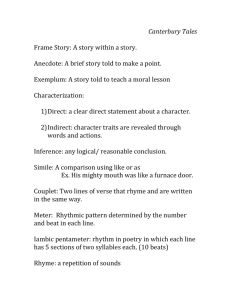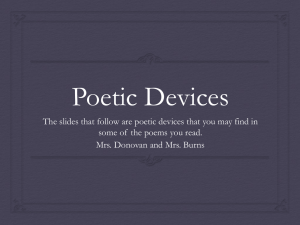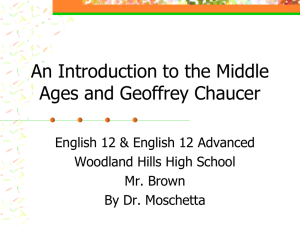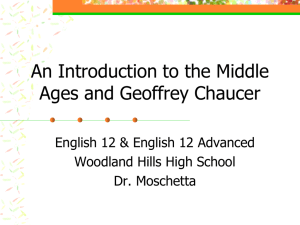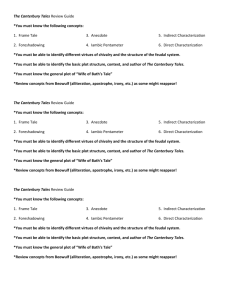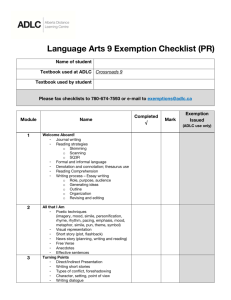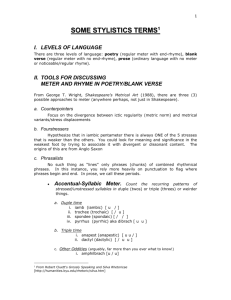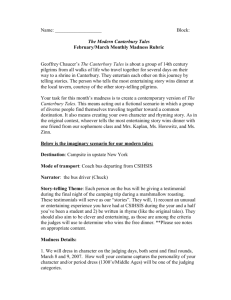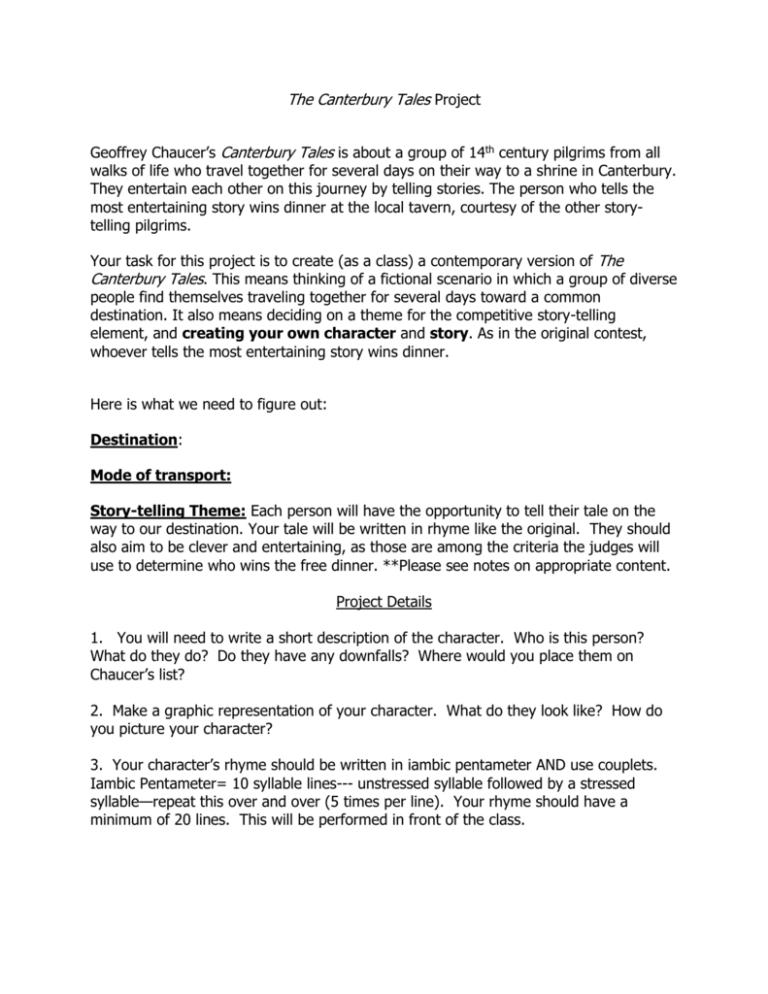
The Canterbury Tales Project
Geoffrey Chaucer’s Canterbury Tales is about a group of 14th century pilgrims from all
walks of life who travel together for several days on their way to a shrine in Canterbury.
They entertain each other on this journey by telling stories. The person who tells the
most entertaining story wins dinner at the local tavern, courtesy of the other storytelling pilgrims.
Your task for this project is to create (as a class) a contemporary version of The
Canterbury Tales. This means thinking of a fictional scenario in which a group of diverse
people find themselves traveling together for several days toward a common
destination. It also means deciding on a theme for the competitive story-telling
element, and creating your own character and story. As in the original contest,
whoever tells the most entertaining story wins dinner.
Here is what we need to figure out:
Destination:
Mode of transport:
Story-telling Theme: Each person will have the opportunity to tell their tale on the
way to our destination. Your tale will be written in rhyme like the original. They should
also aim to be clever and entertaining, as those are among the criteria the judges will
use to determine who wins the free dinner. **Please see notes on appropriate content.
Project Details
1. You will need to write a short description of the character. Who is this person?
What do they do? Do they have any downfalls? Where would you place them on
Chaucer’s list?
2. Make a graphic representation of your character. What do they look like? How do
you picture your character?
3. Your character’s rhyme should be written in iambic pentameter AND use couplets.
Iambic Pentameter= 10 syllable lines--- unstressed syllable followed by a stressed
syllable—repeat this over and over (5 times per line). Your rhyme should have a
minimum of 20 lines. This will be performed in front of the class.
Notes on Taste and Appropriateness:
While humor, wit, and social satire are encouraged in this project, it is important to
respect the boundaries of appropriate and tasteful content. We want to entertain our
audience, not offend them. Good social satire is delicate: we want to illuminate the
quirks and flaws of our characters, but we also want to avoid stereotyping or culturally
insensitive humor.
Not appropriate:
1. excessive alcohol references
2. drug references
3. sexual references
4. swearing
5. any comments that are derogatory or could be offensive to members of racial,
cultural, religious, sexual orientation, or gender groups.
Points & Due Dates
1. Description of character _______________________________________________
2. Graphic representation of character & rough draft of rhyme___________________
3. Final draft of rhyme & performance______________________________________




